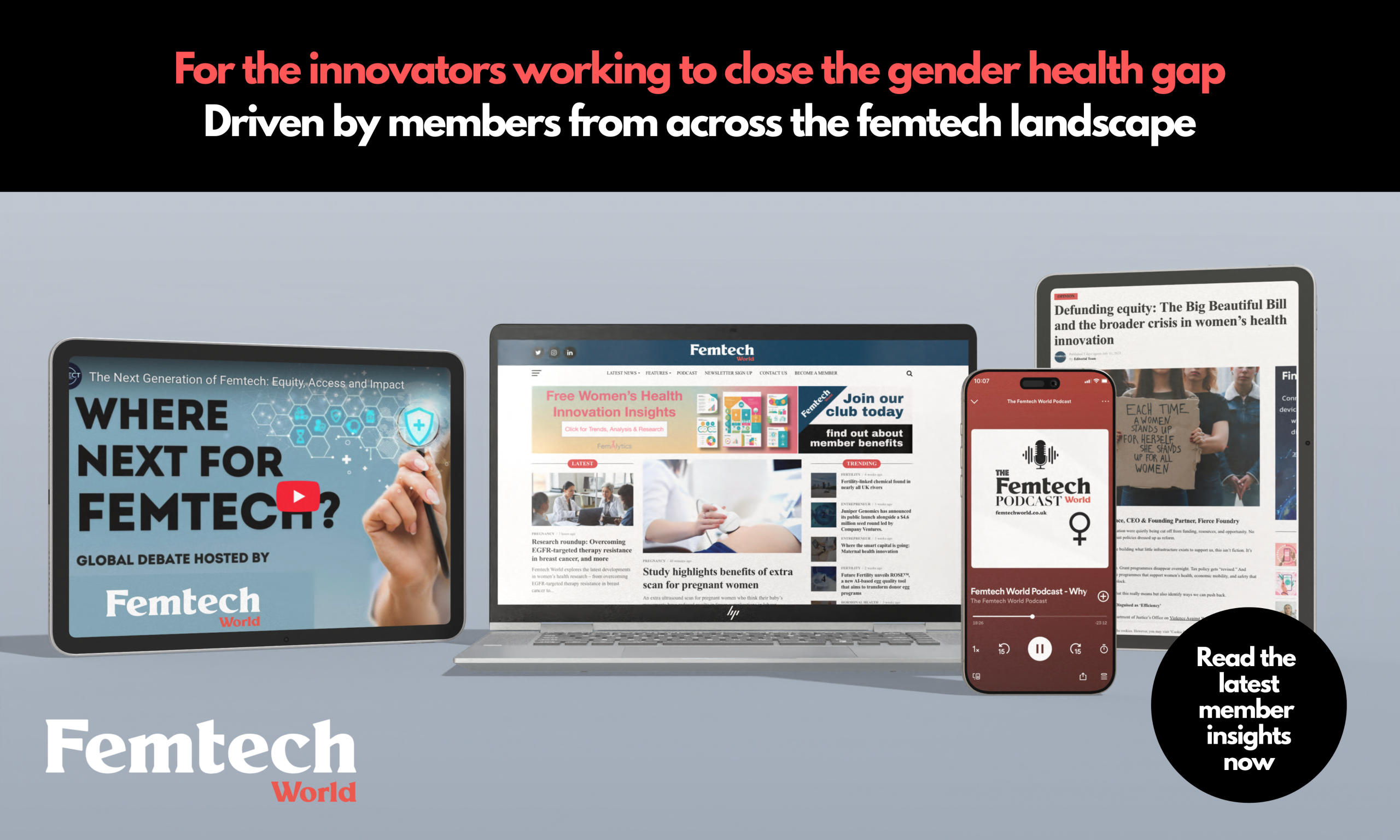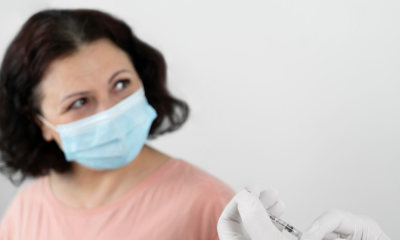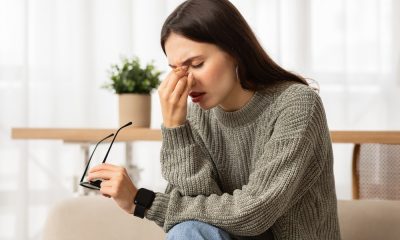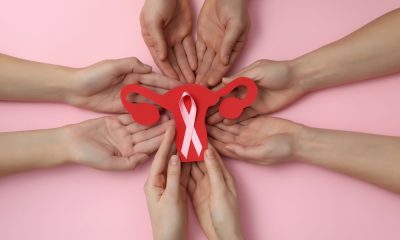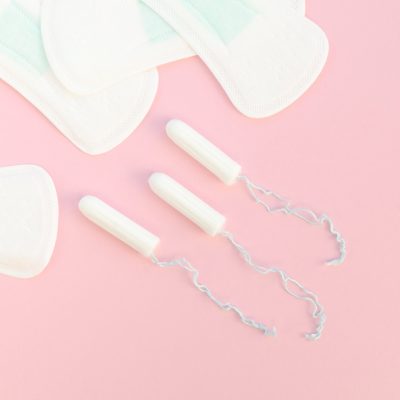Features
Endometriosis linked to hundreds of conditions across the body, study finds

Analysis of millions of health records shows endometriosis is connected to more than 600 conditions, including migraines, asthma and digestive disorders.
The research used algorithms to compare medical histories of people with and without endometriosis, confirming known associations and revealing new ones.
Scientists at the University of California, San Francisco examined data from the University of California’s Health Data Warehouse, which holds records for around eight million people from 2012 onwards.
Findings ranged from reproductive and autoimmune disorders to less-discussed conditions such as gastroesophageal reflux disease, asthma and vitamin D deficiency.
Endometriosis occurs when cells similar to those lining the womb grow outside it and on nearby organs.
Umair Khan is a PhD student in the biological and medical informatics programme at UCSF.
Khan said: “We identified hundreds of health conditions significantly associated with endometriosis, ranging from reproductive disorders and autoimmune diseases to migraines, asthma and gastrointestinal conditions.
“Many of these associations were present even before a formal endometriosis diagnosis, and almost half were replicated in an entirely separate dataset.
“We hope this study validates patients’ lived experience that endometriosis often comes with a variety of other health challenges.”
The large-scale approach allowed researchers to include millions of participants, making the study broader than previous research which usually focused on single conditions such as infertility.
Two notable findings stood out.
Women with endometriosis appeared less likely than others to have high cholesterol – which Khan described as “intriguing, given growing interest in statins as a potential treatment for endometriosis.”
Statins are cholesterol-lowering medicines that are also being explored for their potential to reduce the progression and symptoms of endometriosis.
The study also found a strong association with migraines, suggesting the two conditions may share biological pathways. Migraines often appeared in patients’ records before an endometriosis diagnosis.
Experts said the findings reinforce the view of endometriosis as a systemic disease, not just a pelvic disorder.
Inflammation, immune dysregulation and molecular signals such as microRNAs may help explain its widespread effects.
Research also suggests shared genetic pathways could account for links with conditions like migraine.
Clinicians note that understanding endometriosis as a whole-body condition highlights the importance of early recognition and management.
Patients may benefit from anti-inflammatory medicines not only for pain but to reduce broader systemic effects.
Researchers added that big data methods like those used here could help guide more personalised treatment strategies.
Work is now underway to apply predictive modelling and artificial intelligence to identify those at higher risk and to explore whether existing medicines can be repurposed for treatment.
Diagnosis
Half of countries lack endometriosis care policies
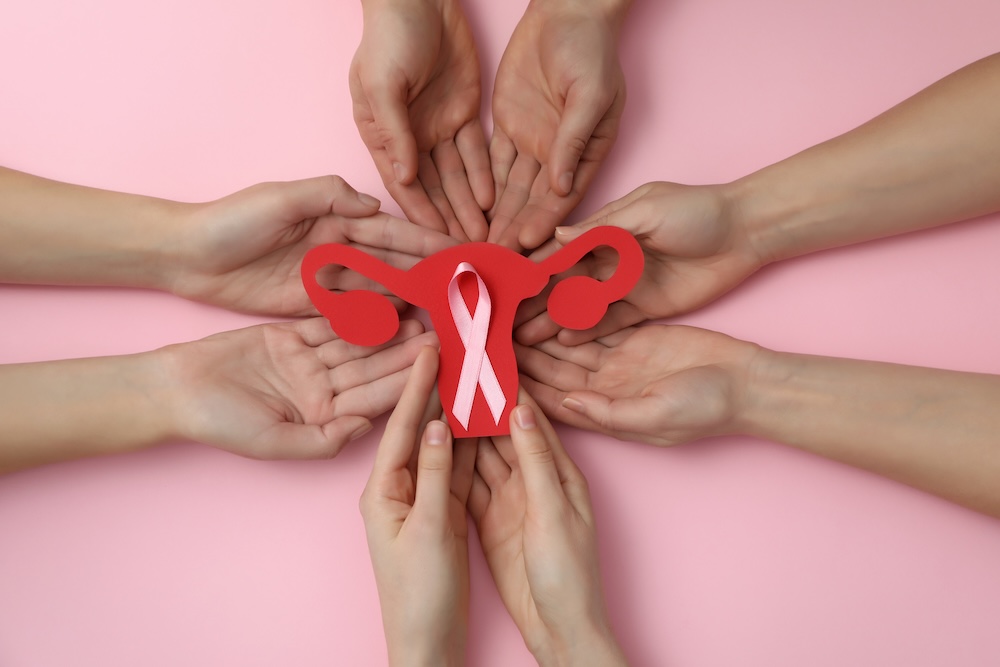
Nearly half of countries lack national policies or clinical guidance for endometriosis care, a new global review has revealed.
Endometriosis affects about one in ten women and girls worldwide. Across 194 WHO member states, researchers found striking disparities in care.
More than a quarter of countries have no publicly available clinical recommendations, and only 7 per cent have government-endorsed care guidelines.
In many places, the only guidance comes from informal sources such as advocacy sites or social media, leading to inconsistent care.
Europe had the widest guideline availability, while many low- and middle-income countries had little or none.
Devon Evans, assistant professor at the University of Manitoba, said: “Our findings show that many people living with this chronic condition are navigating care in regions where no official recommendations exist.”
A companion analysis reported that half of all countries had no policy information available.
Ninety-six countries recognised endometriosis as a national problem, 48 put it on the political agenda, and 12 adopted policies for a national strategy.
Notable examples include national action plans in Australia and France that are being implemented and evaluated.
Tatjana Gibbons if from the University of Oxford’s Nuffield Department of Women’s & Reproductive Health.
Gibbons: “Despite increasing awareness of endometriosis, addressing the challenges faced by those living with the condition requires coordinated national strategies developed in collaboration with policymakers, advocates and patients themselves, to reduce its global burden.”
The authors called for governments, medical societies and patient groups to collaborate on clear, region-specific care standards to cut diagnostic delays, improve quality of life and ensure equitable access to treatment.
An accompanying editorial urged a shift “from awareness to action”, with WHO noting the condition’s physical, mental and socioeconomic impact and the need to demonstrate that policies and guidelines translate into real-world improvements.
News
Smart textiles bra could help detect cancer in women with intellectual disabilities

Women with intellectual disabilities could receive added monitoring for breast cancer with the development of a smart textiles bra by researchers at Nottingham Trent University (NTU) and the University of Glasgow (UofG).
Funded by Cancer Research UK, a team of scientists and designers are developing an electronic textile which would fit inside a bra and monitor whether a tumour is growing in real time, before alerting clinicians to potential risks.
Although women with intellectual disabilities have a lower incidence of breast cancer, they face significantly higher mortality rates due to barriers in accessing current screening methods.
The research is led by Professor Yang Wei of the Nottingham School of Art & Design (NSA&D) and Professor Deborah Cairns, director of SLDO (UofG).
Professor Wei said: “Breast cancer can develop over time, and while some types grow quickly, others may progress slowly, making early detection critical for improving survival outcomes.
“This technology has the potential to save women’s lives by detecting tumours early, while being used as an added measure alongside all other normal checks and scans.”
“As MRI scans can be months apart, patients could be given better peace of mind by knowing that any growth between monitoring appointments would be picked up.
“We hope in the future that this technology could reduce the need for many other checks, such as MRI, ultrasound and mammograms, and in doing so create efficiencies for health services.”
The research is being developed at NTU’s Medical Technologies Innovation Facility (MTIF) and the Scottish Learning Disabilities Observatory (SLDO) at UofG, with an investment of around £100,000 from Cancer Research UK.
The technology uses a form of electrical current that can scan to spot subtle differences in body tissues.
Because tumours tend to be denser and hold less water than healthy areas, the device can help differentiate them.
The technology has the potential to detect growths as little as 5mm – enabling earlier detection and triggering other scans to be taken, such as MRI.
The device would record data and provide feedback via smartphone to the wearer, carers and clinicians so that assessments can be made.
It will be co-designed with input from women with intellectual disabilities, carers, and healthcare professionals to ensure usability and effectiveness.
The research team says there’s potential for the technology to be developed as part of a new bra altogether, as well as an insert.
Cancer Research UK figures show, there are 56,900 new cases of breast cancer in the UK every year, with around 11,200 breast cancer deaths.
Research information manager at Cancer Research UK, Dr Dani Skirrow, said: “Over the past 50 years, our work has helped to nearly double breast cancer survival in the UK.
“We’re committed to making sure everyone shares in this progress equally, regardless of who they are, where they’re from or what type of cancer they have.
“The ‘Smart Bra’ has the potential to make breast cancer screening more accessible so that more people can benefit from it.
“This would help us to detect more breast cancers at the earliest stage, when treatments are most likely to work.
“We’re supporting our scientists to develop innovative technologies like the ‘Smart Bra’ to make sure the benefits of research are shared by everyone.”
Features
Top 7 drug-free solutions for managing PMS and PMDD in in 2025

Have you noticed how some weeks you feel focused and energetic, while other weeks bring brain fog, pain, and mood swings that feel impossible to manage?
For the estimated 90 per cent of women who experience premenstrual syndrome (PMS) and the 5-8 per cent living with premenstrual dysphoric disorder (PMDD), monthly symptoms aren’t just inconvenient; they’re life-disrupting.
Traditional approaches often default to pharmaceutical interventions: birth control pills, antidepressants, or pain medications. But what if your body is asking for something different?
In 2025, drug-free PMDD treatment and natural menstrual relief options have moved from alternative corners into mainstream science, backed by clinical research and measurable outcomes.
Understanding PMS and PMDD: What Your Brain Is Really Doing
Before jumping into solutions, it’s worth understanding what’s actually happening. PMS and PMDD aren’t just hormonal. They’re brain-based responses to hormonal fluctuations.
PMS (Premenstrual Syndrome) involves physical and emotional symptoms in the week or two before menstruation: breast tenderness, bloating, irritability, fatigue, and mood changes.
PMDD (Premenstrual Dysphoric Disorder) affects 5-8 per cent of menstruating individuals with debilitating mood symptoms: severe depression, anxiety, anger, and hopelessness.
Many with PMDD are told they’re just emotional, when the reality is their brain is responding intensely to normal hormonal shifts.
Research shows that estrogen and progesterone affect brain connectivity and even brain volume in regions connected to memory, mood, and pain.
This isn’t weakness. It’s neuroscience.
The top 7 Drug-Free Solutions for Managing PMS and PMDD are:
1. Neurostimulation Technology: Brain-First Relief for Menstrual Symptoms
The most promising advancement in drug-free PMDD treatment comes from neurotechnology. Transcranial direct current stimulation (tDCS) delivers gentle electrical currents to specific brain regions involved in mood regulation and pain processing.
Clinical studies demonstrate that neuromodulation can reduce menstrual pain and improve low mood symptoms without hormones or systemic side effects.
By working directly on neural circuits, it addresses symptoms at their control centre rather than masking them.
Neurostimulation takes advantage of neuroplasticity — the brain’s ability to rewire and strengthen itself. When you consistently activate certain neural pathways, you can actually change how your brain processes pain signals and regulates mood.
Wearable devices designed specifically for menstrual health now bring this technology home.
Users typically wear the device for 20 minutes daily during specific cycle phases.
No appointments, no pharmacy visits.
Samphire’s Nettle™ represents this brain-first approach: a CE-certified medical device that has shown clinical effectiveness in reducing menstrual-related pain and mood symptoms.
It’s hormone-free and drug-free, making it compatible with existing treatments or as a standalone solution.
2. Targeted Nutritional Support: Food as Medicine for Natural Menstrual Relief
What you eat directly impacts inflammation, neurotransmitter production, and hormonal metabolism. Certain nutrients have been clinically shown to reduce PMS and PMDD symptoms.
|
Nutrient |
Daily Dose |
Primary Benefit |
Food Sources |
|
Magnesium |
200-400mg |
Reduces cramping, improves mood |
Dark leafy greens, pumpkin seeds, dark chocolate |
|
Vitamin B6 |
50-100mg |
Supports serotonin production |
Chickpeas, salmon, potatoes, bananas |
|
Calcium |
1,000-1,200mg |
Decreases mood swings and pain |
Dairy, fortified plant milk, sardines, kale |
|
Omega-3 Fatty Acids |
1-2g EPA/DHA |
Reduces inflammation and depression |
Fatty fish, walnuts, flaxseed |
|
Vitamin D |
1,000-2,000 IU |
Regulates mood and immune function |
Fortified foods (e.g., dairy and non-dairy milks), supplements |
Magnesium supplementation reduces PMS symptoms by 30-40 per cent.
Vitamin B6, when taken consistently, has shown particular effectiveness for mood-related symptoms because it helps convert tryptophan into serotonin, your brain’s primary mood-regulating neurotransmitter.
3. Cycle-Synced Movement: Exercise That Works With Your Brain
Exercise is often recommended for PMS, but the type and intensity matter significantly.
Your brain responds differently to movement across your cycle.
Follicular Phase (Days 1-14): Rising estrogen levels increase pain tolerance and support muscle building. This is when high-intensity interval training and strength training feel most manageable.
Luteal Phase (Days 15-28): As progesterone rises and estrogen drops, your body shifts toward a more inflammatory state. Moderate-intensity movement, such as yoga, walking, and swimming, reduces PMDD symptoms more effectively than high-intensity training during this phase.
4. Cognitive Behavioural Therapy and Mind-Body Techniques for Drug-Free PMS Management
Cognitive behavioural therapy (CBT) has emerged as one of the most effective drug-free PMDD treatment approaches, with clinical trials showing results comparable to antidepressant medications for some individuals.
PMDD often involves thought patterns that intensify emotional responses. CBT helps identify and restructure these patterns before they spiral. Accessible mind-body practices include:
- Breathwork: Slow, diaphragmatic breathing activates the parasympathetic nervous system, reducing anxiety and pain perception
- Mindfulness meditation: Studies show 8 weeks of consistent practice increases grey matter in brain regions connected to emotional regulation
- Progressive muscle relaxation: Systematically tensing and releasing muscle groups reduces physical tension and mental stress
5. Strategic Sleep Optimisation: Reset Your Brain’s Control Centre
Sleep disruption is both a symptom and a cause of worsening PMS and PMDD. Progesterone metabolites have sedative effects, which is why some women feel more tired during their luteal phase.
Key Sleep Strategies:
- Keep bedroom temperature 2-3 degrees cooler during the luteal phase (progesterone raises body temperature)
- Avoid caffeine after 2 PM
- Use blackout curtains or eye masks
- Consider magnesium glycinate 1-2 hours before bed
- Maintain consistent sleep-wake times even during symptomatic phases
6. Anti-Inflammatory Nutrition Patterns for Natural Menstrual Relief
Chronic low-grade inflammation worsens both pain and mood symptoms.
The Mediterranean diet consistently shows benefits for menstrual health due to its anti-inflammatory profile.
Foods to Prioritise:
- Colourful vegetables (5-7 servings daily)
- Berries and cherries (high in anthocyanins)
- Fatty fish 2-3 times weekly
- Extra virgin olive oil
- Nuts and seeds
- Turmeric and ginger
Foods to Minimise:
- Refined sugars and processed foods
- Trans fats and hydrogenated oils
- Excessive alcohol
- High sodium intake during the luteal phase
7. Herbal Supplements: Traditional Medicine Meets Modern Science
Certain botanicals have demonstrated clinical effectiveness for natural menstrual relief, with safety profiles that make them viable long-term options.
Vitex (Chasteberry): Multiple studies show vitex reduces PMS symptoms by 50% or more by influencing dopamine receptors. Typical dose: 20-40mg daily.
Evening Primrose Oil: Contains gamma-linolenic acid (GLA), an omega-6 fatty acid that reduces inflammatory prostaglandins. Typical dose: 500-1,000mg twice daily during the luteal phase.
Saffron: A 2020 randomised controlled trial found saffron extract (30mg daily) reduced PMDD symptoms comparably to fluoxetine with fewer side effects.
Ginger: Studies demonstrate ginger’s effectiveness for menstrual pain, with some trials showing results equivalent to ibuprofen. Typical dose: 250mg four times daily during menstruation.
Building Your Personalised Drug-Free PMDD Treatment Plan
The most effective approach rarely involves just one solution.
Combining strategies typically yields better results than any single intervention.
Getting Started:
- Track symptoms across at least two full cycles
- Implement sleep optimisation and basic nutrition changes first
- Add one targeted intervention (neurostimulation, supplements, or mind-body practices) based on your primary symptoms
- Assess which interventions created the most improvement after 2-3 cycles
The Brain-First Approach: Why This Matters
Every hormonal change starts in the brain. The hypothalamus releases signals that trigger the pituitary, which then signals the ovaries.
This is why brain-first interventions, whether neurostimulation, CBT, sleep optimisation, or strategic nutrition, can create lasting change.
Understanding your cycle patterns and how your brain responds in each phase provides insight that makes everything else more effective.
You’re not just managing symptoms.
You’re giving your brain the support it needs to regulate responses more effectively.
-

 News3 weeks ago
News3 weeks agoDozens of women report suffering painful burns after using Always sanitary towels
-

 News4 weeks ago
News4 weeks agoCutting through the noise in femtech – key takeaways from Women’s Health Week 2025
-
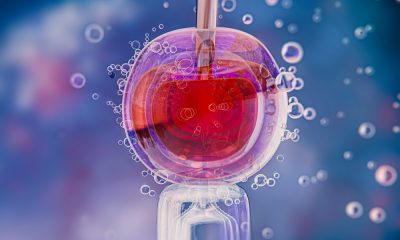
 News3 weeks ago
News3 weeks agoAI embryo selection tool wins European approval
-

 Opinion6 days ago
Opinion6 days agoOpinion: Not ‘just stress’ – How hormonal changes affect women’s brain function
-
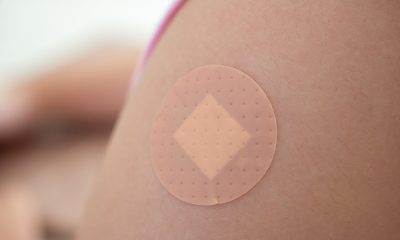
 Menopause3 weeks ago
Menopause3 weeks agoTestosterone patch shows promise for menopausal women
-

 Insight4 weeks ago
Insight4 weeks agoScientists develop breakthrough approach to detecting endometriosis in menstrual blood
-

 Features3 weeks ago
Features3 weeks agoFrom SEO to GEO: How women’s health brands can get found in the age of AI
-

 Menopause3 weeks ago
Menopause3 weeks agoFDA approves new menopause drug to treat hot flashes and night sweats



